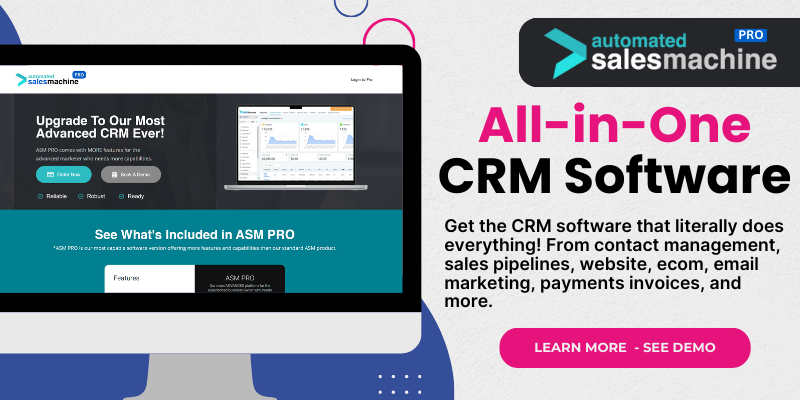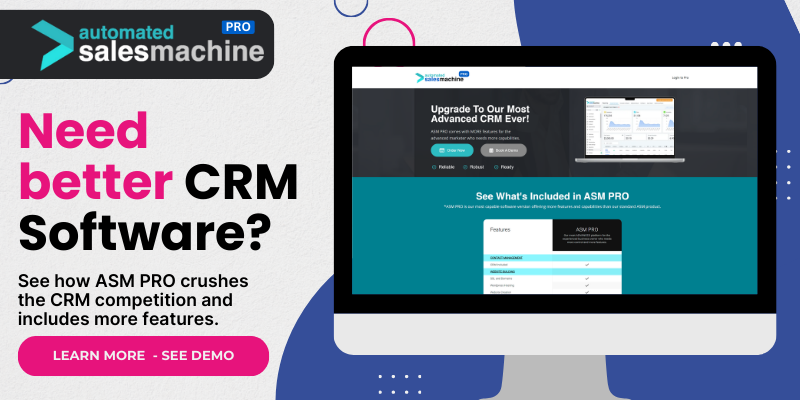1. Understanding Your Business Needs
Identify Core Functionalities
When I first started using CRM software, I realized that every business has its own unique set of needs. Some might prioritize customer service, while others may focus on sales tracking. It’s crucial to identify what functionalities are most essential for your operations. A deep dive into your daily processes will help you pinpoint these needs.
For instance, if your sales team is constantly on the move and needs access to data on-the-go, a CRM solution that offers a mobile app is a must. On the other hand, if your focus is more on project management, you may want to find a CRM that integrates well with those tools.
After evaluating my own needs, I found that having a centralized hub for customer interactions not only streamlined operations but also improved my team’s response times. So, sit down and be honest about what your business truly requires before making any decisions.
Scale Considerations
Next up is the size and scalability of your business. What works for a small team may not function effectively for a larger organization, and vice versa. When I was at a smaller startup, our needs were completely different compared to a point when I managed a larger group.
Think about your projected growth as well. If you expect to expand in the next few years, investing in a CRM that can scale with your business is key. Some platforms might offer basic features now but will restrict your options later on.
I learned this the hard way when I outgrew my previous system. Moving to a more flexible CRM was essential, as it saved me time and money in the long run.
Customer Expectations
Let’s talk about your customers. In today’s market, they expect a seamless experience. Understanding their needs and pain points is vital. I always say, know your audience inside and out!
With a CRM, you can gather data on customer interactions, preferences, and feedback, which can greatly enhance your service delivery. Having this data at your fingertips allows you to personalize your approach and truly connect with customers.
From my experience, the better you understand your customers, the more successful your business will be. A CRM can be that bridge between you and your clientele, facilitating conversations that matter.
2. Integration with Existing Tools
Current Tools and Software
When I was ready to implement a CRM, one of my first questions was, “How does this fit with what I already have?” A CRM needs to play nice with your existing tools and software. If it doesn’t, you might end up spending more time trying to make things work than reaping the benefits of the system.
From my experience, I made sure to look into various integrations before deciding on the right CRM. Email marketing tools, project management software, and accounting platforms are just a few examples. The last thing you want is to create data silos!
By ensuring the CRM integrates well with my current systems, I’ve been able to keep everything streamlined, and it makes reporting so much easier.
APIs and Customization
If you have specialized needs, you’ll want to consider whether the CRM offers APIs or customization options. Not all businesses can fit into a standard mold, and that’s okay! I’ve often needed custom fields or specific workflows, and being able to modify the system to suit my business was a gamechanger.
A robust API can help you connect your CRM to other unique systems you might use, ensuring a seamless data flow. Trust me, when you’re running a tight ship, every tool needs to work in concert!
With the right customization capabilities, my team was able to tailor the CRM to suit our specific processes, leading to improved efficiency and overall satisfaction.
Ease of Use
The usability of the CRM should not be overlooked. When I first introduced a CRM to my team, I wanted everyone to hit the ground running without extensive training. A user-friendly interface made that possible!
You’re going to want something that feels intuitive. If your team is struggling to navigate the software, that can lead to resistance and underutilization of the tool. I’ve always prioritized solutions that have a simple, clean design.
Plus, many CRMs offer tutorials and support which can make the transition easier. Having that backup helped my team become comfortable with the software quickly.
3. Budget and Costs
Understanding Pricing Models
Now let’s face it, the budget is essential. CRM solutions come in a variety of pricing models, and it’s important to pick one that aligns with your budget while still meeting your needs. I’ve often come across ‘affordable’ systems that don’t deliver the functionalities I wanted, which ultimately caused more stress.
Look into what the costs cover. Some might have tiered pricing based on features, while others could charge per user. Evaluate which pricing model works best for your organization, keeping in mind your long-term goals.
By understanding the pricing structure upfront, I was able to plan for both immediate and future expenses, avoiding any nasty surprises down the road!
Hidden Costs
Be cautious of hidden costs that can sneak in. A CRM might seem budget-friendly, but when you add premium features, onboarding fees, or customer support costs, the total can balloon. When I signed up for a new CRM, I made sure to read through the fine print.
Always ask vendors upfront about any potential extra charges or future licensing fees that could come into play. Transparency is crucial in any business relationship!
I learned that being proactive about these costs means I could better allocate funds and avoid unexpected bills, keeping my financial plan on track.
Value Over Price
Ultimately, while the budget is important, I always emphasize the value that the CRM brings. The right CRM can save you time and boost your revenue, which means investing in the right tool can pay off exponentially.
Take a long-term approach. If a higher-priced solution offers more features and better integration, it might be worth it. You’ve got to weigh the costs against the potential benefits!
I found that focusing on value rather than just looking for the cheapest option made all the difference in my business operations.
4. Customer Support and Resources
Availability of Support
Having reliable customer support can be a lifesaver when you run into issues. I learned early on that choosing a CRM with great support can save you countless hours of frustration. You want a vendor that offers multiple channels for customer support—like live chat, email, and phone.
When I was struggling with a feature, being able to reach out and get quick help was invaluable. Responsive support can turn a potential catastrophe into a small hiccup!
Make sure to test out their support options during your trial period. If they’re unresponsive or hard to reach, it’s a big red flag.
Learning Resources
I’ve also found that a good CRM should come with plenty of learning resources. Whether that’s video tutorials, documentation, or community forums, having access to knowledge can empower my team to use the tool effectively.
When I first got started, I relied heavily on tutorials to help navigate the system. It built my confidence and ensured we were maximizing what the CRM had to offer.
A CRM with a robust knowledge base or training resources can make onboarding a breeze. So, always check what comes in the package!
Community and User Base
Finally, being a part of a larger community can provide additional support. Many CRM platforms have user groups, forums, or social media communities where you can share tips and ask questions.
Having that kind of support system helped me in situations where I was baffled. Other users might have faced the same challenges and can share their experiences.
A strong community around a CRM can sustain morale and foster a more resourceful environment, keeping everyone engaged and on the same page.
5. Evaluating Long-Term ROI
Assessing Performance Metrics
Now, let’s get into the nitty-gritty of analyzing returns. When I made the jump to CRM, I made sure to set clear performance metrics from the get-go. What did I want to achieve in terms of sales growth, customer satisfaction, or efficiency?
Tracking these metrics is crucial for understanding whether the CRM is worth the investment. I often refer back to these metrics to see if I’m meeting my targets or if adjustments are needed.
Having concrete numbers allows me to analyze the ROI accurately and helps make a compelling case for continuing (or adjusting) my CRM investment in board meetings.
User Adoption and Satisfaction
Another aspect I focus on is how the team is adapting and benefiting from the CRM. Are your employees happier? Is it making their jobs easier? A satisfied team is more productive, and I prioritize creating a work environment where tools support their success!
Surveys or feedback sessions can be integral to gauging user satisfaction levels. If my team is struggling with an aspect of the CRM, addressing it early on can lead to better results.
When everyone is on board, it directly reflects in customer interactions and, ultimately, the bottom line.
Continual Improvement
Lastly, I take a long-term view of continual improvement. The best CRMs evolve over time with regular updates and new features. If a platform isn’t keeping up with industry trends or your business needs, it might be time to explore alternatives.
Regularly reassessing your needs against the CRM’s offerings ensures that you’re not settling for something that’s “good enough.” I like to stay progressive and adopt tools that keep pace with my business growth.
Remember, the aim is to leverage the CRM to drive business developments, so keep your eyes peeled for advancements that could benefit you!
FAQ
1. What is Cosential CRM software used for?
Cosential CRM software is designed primarily for firms in the architecture, engineering, and construction industries. It helps manage customer relationships, project information, and marketing efforts effectively.
2. How do I know if Cosential is right for my business?
It’s essential to first assess your business needs, including integrations, budget, user experience, and long-term goals. Understanding these factors can help you determine if Cosential meets your requirements.
3. What are the main advantages of using a CRM like Cosential?
Some advantages include streamlined operations, enhanced customer engagement, improved organization, and better data-driven decision-making capabilities. It can enhance productivity and efficiency across your business.
4. Is training available for new users of Cosential CRM?
Yes, many CRM providers, including Cosential, offer training resources. This could be in the form of online tutorials, live demonstrations, or detailed documentation to help new users get acquainted with the software.
5. What should I consider for CRM costs?
When evaluating CRM costs, consider the pricing model, any hidden fees for additional features, and the overall value the CRM provides to your business. Comparing potential ROI against the investment is key!

